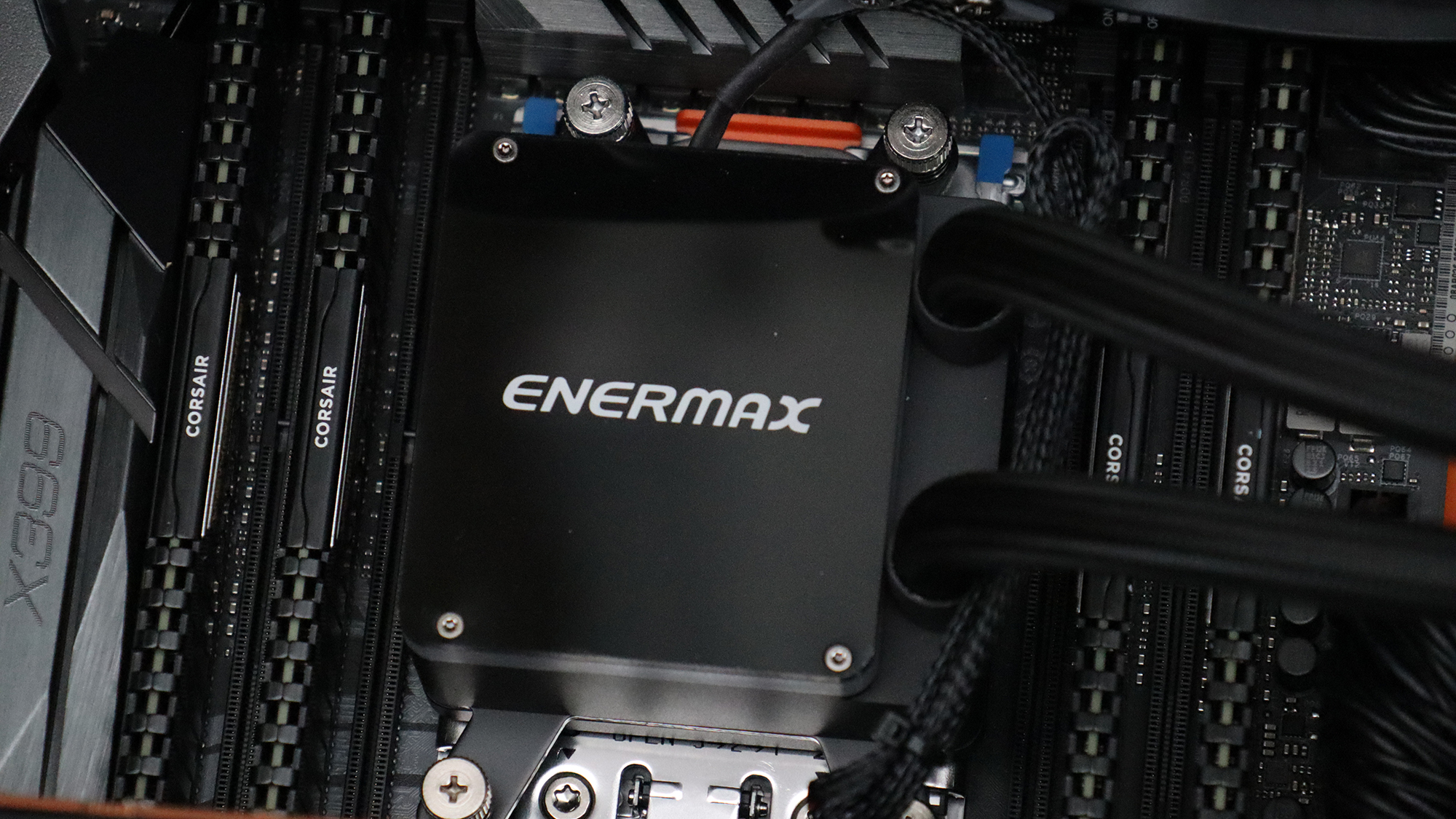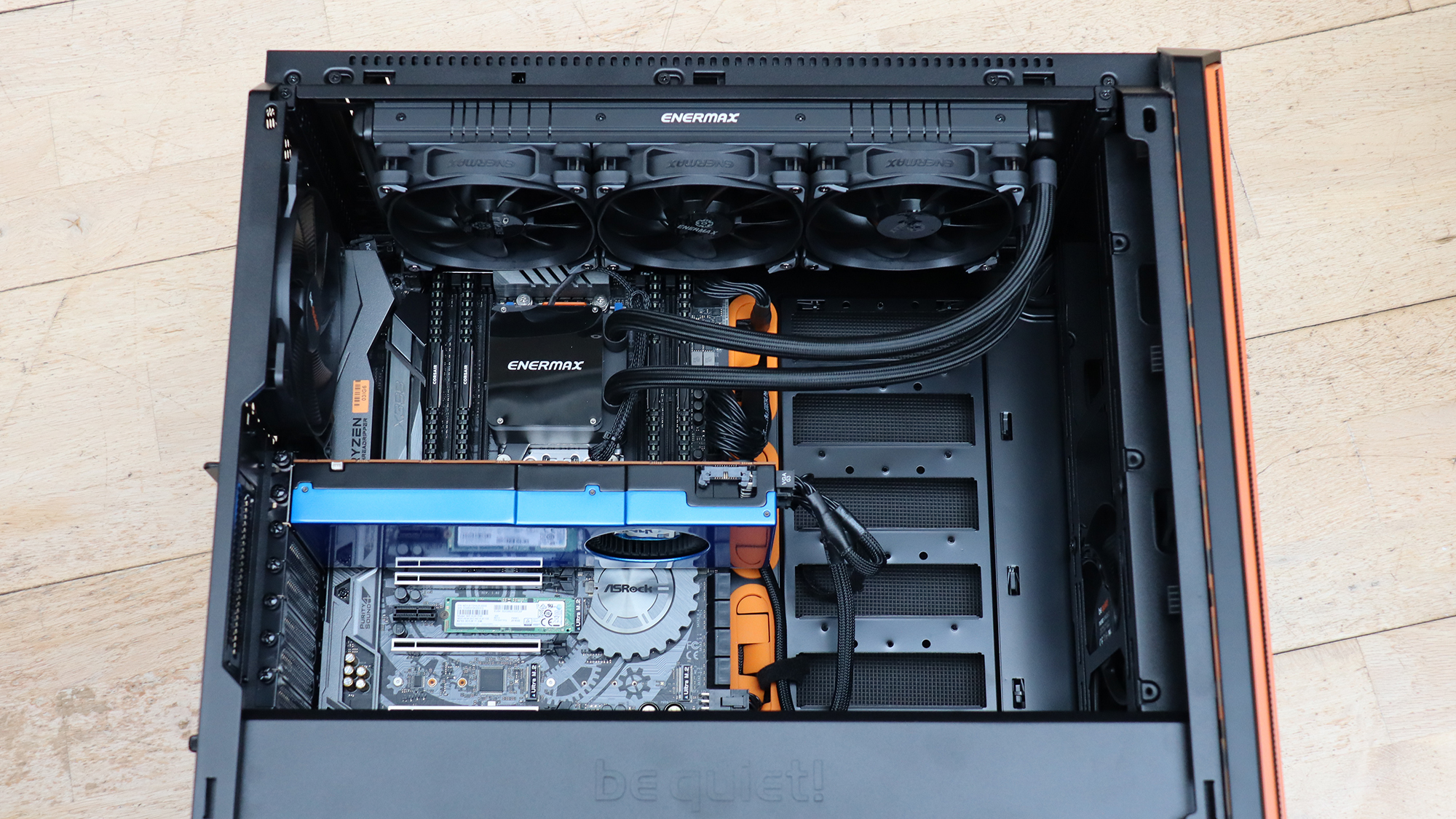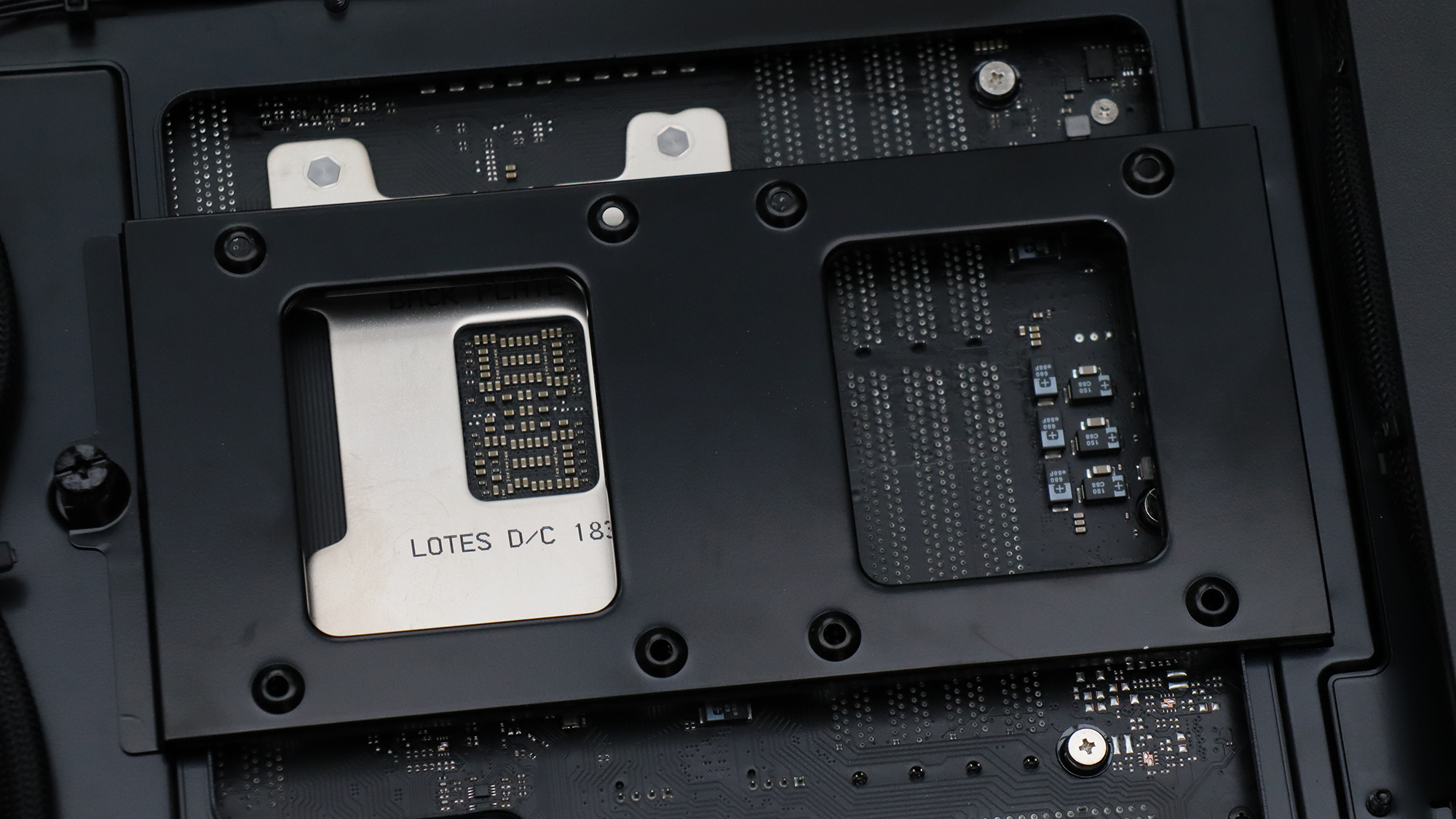Armari Gravistar BR-850A 24c TR4 review: The best of both worlds
24-core AMD Threadripper 2970WX shows a great balance of multi-core performance and value
A supremely well-proportioned system, combining great modelling ability with potent multi-threaded rendering that’s not too far behind a 32-core AMD Threadripper workstation.
-
+
Excellent modelling performance; Very fast CPU rendering; Powerful GPU compute possibilities; Reasonably priced for the performance
-
-
No secondary storage included in the price; Only three bays available for upgrade

Just when you thought the competition between Intel and AMD's processors had settled down a bit, AMD is piling on even more pressure. Hot on the heels of the amazing 32-core 2990WX and second generation 16-core 2950X comes another round of new CPUs, including the 12-core Ryzen Threadripper 2920X and 24-core 2970WX. Here we take a look at the latter in an Armari Gravistar BR-850A 24c TR4 workstation.
Armari Gravistar BR-850A 24c TR4 review: Processor and Memory
Since our first test of the 2990WX, we have noticed that whilst this CPU has a nominal 250W TDP, many supposedly compatible cooling systems can't quite keep up with taming 32 cores running at full pelt, although our initial review system had this aspect covered. The 24-core 2970WX, however, has a nominal 180W TDP so has a bit more headroom when used with 250W-capable water coolers. In theory, then, it could supply more of its performance more of the time.
The 2970WX uses the second-generation Ryzen core, which has had a few tweaks over the original version, although these are all under the hood. It still has virtual threading, so presents 48 virtual cores from its 24 physical ones. The base and boost frequencies are the same as the 2990WX -- 3GHz and 4.2GHz respectively. Perhaps the biggest feature of the latest Threadrippers is Precision Boost Overclock (PBO), which dynamically increases individual core clock speeds depending on power delivery and cooling capabilities.
This is why we think the 2970WX is particularly interesting. Despite the 180W TDP of this processor, Armari has still chosen to include the triple-fan Enermax Liqtech TF4 360mm water cooling system, which can cope with TDPs in excess of 500W. This will mean that cooling will not be the limiting factor for PBO, and potentially more of the cores can run at close to 4.2GHz for longer. We have included an extra benchmark to test this, which we'll talk more about later.

One thing that isn't new, however, is the motherboard. Armari has stuck with the ASRock Taichi X399 that arrived with the first Threadripper generation, which is compatible with the new CPUs after a simple BIOS update. The RAM is also the same quartet of 8GB 3,000MHz Corsair Vengeance LPX DDR4 DIMMs, for a total of 32GB of memory. This leaves four slots free for upgrades upto the motherboard's maximum of 128GB, and ECC memory is supported although not used in this case.
Armari Gravistar BR-850A 24c TR4 review: Graphics Acceleration
Until the NVIDIA Quadro RTX graphics accelerators arrive, AMD has a reasonably competitive offering for professional 3D. The most recent addition was the Radeon Pro WX 8200, included here, which costs half as much as the WX 9100 but offers much more than half the performance. It boasts 3,584 stream processors versus 4,096, but with the same 1,200MHz base clock and slightly higher 1,530MHz boost. There is only 8GB of HBM2 memory, however, half that of the WX 9100, but here again it runs a little faster at 1,000MHz rather than 945MHz. This may seem slow compared to GDDR5 memory, but an extremely wide 2,048-bit bus means that the bandwidth is actually a whopping 512GB/sec.
Armari Gravistar BR-850A 24c TR4 review: Storage
Armari has been relatively frugal in the number of storage devices supplied, providing only a M.2 NVMe SSD. However, it's a quick and capacious one in the shape of a Samsung PM981. According to CrystalDiskMark 6, this SSD is capable of 3,302.3MB/sec reading and 2,390.8MB/sec writing. Although no HDDs are included with this system, there is a caddy that slides out for a couple of 3.5in drives, and a plate behind the motherboard for a third drive. However, the huge radiator at the top of the chassis, and associated pipework, means that the other drive cage options afforded by the chassis won't be available.
Armari Gravistar BR-850A 24c TR4 review: Chassis Design
The difference between Armari's Magnetar and Gravistar ranges is that the former uses the company's bespoke custom chassis designs whilst the latter takes something more generic off the shelf. In the case of this system, it's a BeQuiet! Silent Base 601 case, which is still a nicely designed piece of kit. One of the main benefits of this chassis, however, is that it has room for the aforementioned triple-fan Enermax cooling. As we have already noted, this has imposed a limitation on internal expansion potential, but the spacious interior makes for excellent airflow.

You get three USB ports on the front top edge of the case, alongside the power button, audio minijacks, and a fan control switch. There are no 5.25in bays on the front - BeQuiet! obviously doesn't see the need for these anymore. You get two 3.5in bays in the bottom, alongside the 850W EVGA SuperNOVA G3 GOLD power supply.
The ASRock motherboard supplies rear connectivity, including eight USB 3.0 ports and USB 3.1 Gen 2 in both Type A and Type C formats. There are lots of networking options, with two Gigabit LAN ports plus two connectors for 802.11ac WiFi antennas. You also get the usual7.1-channel analog surround sound outputs, microphone input, and a S/PDIF digital connection.
Armari Gravistar BR-850A 24c TR4 review: Processor Performance
Since the processor is the newest component here, we were most interested in how it performed. Strangely, it was actually slightly slower overall in our Media Benchmarks than the 16-core 2950X, managing 425, although this is still a hugely quick result. It managed an identical 170 in image editing, a slightly slower 398 in video encoding, but faster 528 in multi-tasking, as you might expect with the extra cores. The results of 4,432 single-core and 37,510 multi-core in GeekBench 4 are also very impressive.
However, the real benefits are most likely to be found in tasks that can take full advantage of the 24 cores. The result of 4,651 in Maxon Cinebench R15's CPU render is 41% faster than the 2950X, so you are getting most of the benefit of the extra cores, whilst the 32-core 2990WX is 23% quicker still.

Nevertheless, the Cinebench render doesn't take very long, meaning PBO won't be having a significant effect, so we also tried the much more gruelling Blender Gooseberry render test. This took 899.89 seconds, compared to 793.32 on the 2990WX, and 1773.46 on a 1950X (we didn't have a 2950X to hand for this test). In other words, you get 12% less performance for 25% few cores than the 2990WX, so you are hitting a sweet spot for performance over an extended multi-core render.
Armari Gravistar BR-850A 24c TR4 review: Graphics Performance
AMD has obviously tweaked the drivers on the Radeon Pro WX 8200 since we last tested it, because there were some clear graphics performance improvements. In SPECviewperf 13, the 3dsmax-06 result has jumped from 117.57 to 141.97, which would place it on par or ahead of a NVIDIA Quadro P4000 or P5000. The maya-05 score remains an excellent 248.59, which is again ahead of the P4000 and P5000. The catia-05 score of 241.01 is ahead of a P4000, although the creo-02 score of 181.36 and snx-03 result of 276.9 are a little behind. Nevertheless, with 145.36 in sw-04 this is still a very capable card for engineering and product design. But its clear forte is 3D animation with 3ds Max and Maya.
In GFX Bench 4, the WX 8200 achieved 5,947.9 onscreen and 1,3044.3 off screen in Car Chase, alongside 6,626.47 onscreen and 10,509 offscreen in Manhattan. There's lots of OpenCL power available, too, with 4,767 in LuxMark 3.1, which bodes well for GPGPU rendering via ProRender, although the 8GB of frame buffer will prove a limitation for some scenes. This is not enough to run the Blender Gooseberry render on the GPU, for example.
Armari Gravistar BR-850A 24c TR4 review: Verdict
Overall, this is another very promising AMD package from Armari. The 24-core Threadripper 2970WX, with adequate cooling, still provides amazing multi-threaded performance whilst shaving around 450 off the price of the 32-core 2990WX. If you want a great balance of content creation and rendering capability, the Armari Gravistar BR-850 24c TR4 provides the best of both worlds.
Verdict
A supremely well-proportioned system, combining great modelling ability with potent multi-threaded rendering that’s not too far behind a 32-core AMD Threadripper workstation.
| Processor: | 3.0GHz AMD Ryzen Threadripper 2970WX |
| RAM: | 32GB 3,000MHz Corsair Vengeance LPX DDR4 SDRAM |
| Graphics: | 8GB HBM2 AMD Radeon Pro WX 8200 |
| Storage: | 1TB Samsung PM981 NVMe SSD |
| Operating System: | Windows 10 Professional 64-bit |
| Warranty: | 2 years (1st year collect and return, 2nd year RTB parts and labour) |
| Website: | http://armari.com |
Get the ITPro daily newsletter
Sign up today and you will receive a free copy of our Future Focus 2025 report - the leading guidance on AI, cybersecurity and other IT challenges as per 700+ senior executives
Dr James Morris has worked as a technology journalist for over 25 years, including spending nine years on the staff of market-leading computer magazine PC Pro, the last five of which were as the publication’s editor. He specialises in enterprise-grade software and hardware, with a particular focus on content creation. He launched a pioneering video channel for HEXUS.net in 2006 and ran the video reviews channel for TrustedReviews.com for four years. He also runs a successful online digital content and commercial video production company, t-zero communications Ltd.
Dr Morris is a prolific technology writer and contributes commercial content for major IT brands including AMD, BlackBerry, Dell, Cognizant, HP, and IBM. He published a book on artificial intelligence, Can Computers Create Art? in 2009. He is also an academic, and is currently Pathway Director of the MA, Interactive Journalism at City, University of London.
Previously, he was course leader for the BA in Web Media Production at Ravensbourne University. He has a PhD in Philosophy, Art and Social Thought from the European Graduate School in Switzerland, a Master's in Media Arts from the New School in New York, USA, and a Bachelor's in Social Anthropology from the London School of Economics.
Dr. Morris can be found on Twitter at @Cyberwest, or emailed at j@tzero.co.uk
-
 Westcon-Comstor and Vectra AI launch brace of new channel initiatives
Westcon-Comstor and Vectra AI launch brace of new channel initiativesNews Westcon-Comstor and Vectra AI have announced the launch of two new channel growth initiatives focused on the managed security service provider (MSSP) space and AWS Marketplace.
By Daniel Todd Published
-
 Third time lucky? Microsoft finally begins roll-out of controversial Recall feature
Third time lucky? Microsoft finally begins roll-out of controversial Recall featureNews The Windows Recall feature has been plagued by setbacks and backlash from security professionals
By Emma Woollacott Published
-
 The UK government wants quantum technology out of the lab and in the hands of enterprises
The UK government wants quantum technology out of the lab and in the hands of enterprisesNews The UK government has unveiled plans to invest £121 million in quantum computing projects in an effort to drive real-world applications and adoption rates.
By Emma Woollacott Published